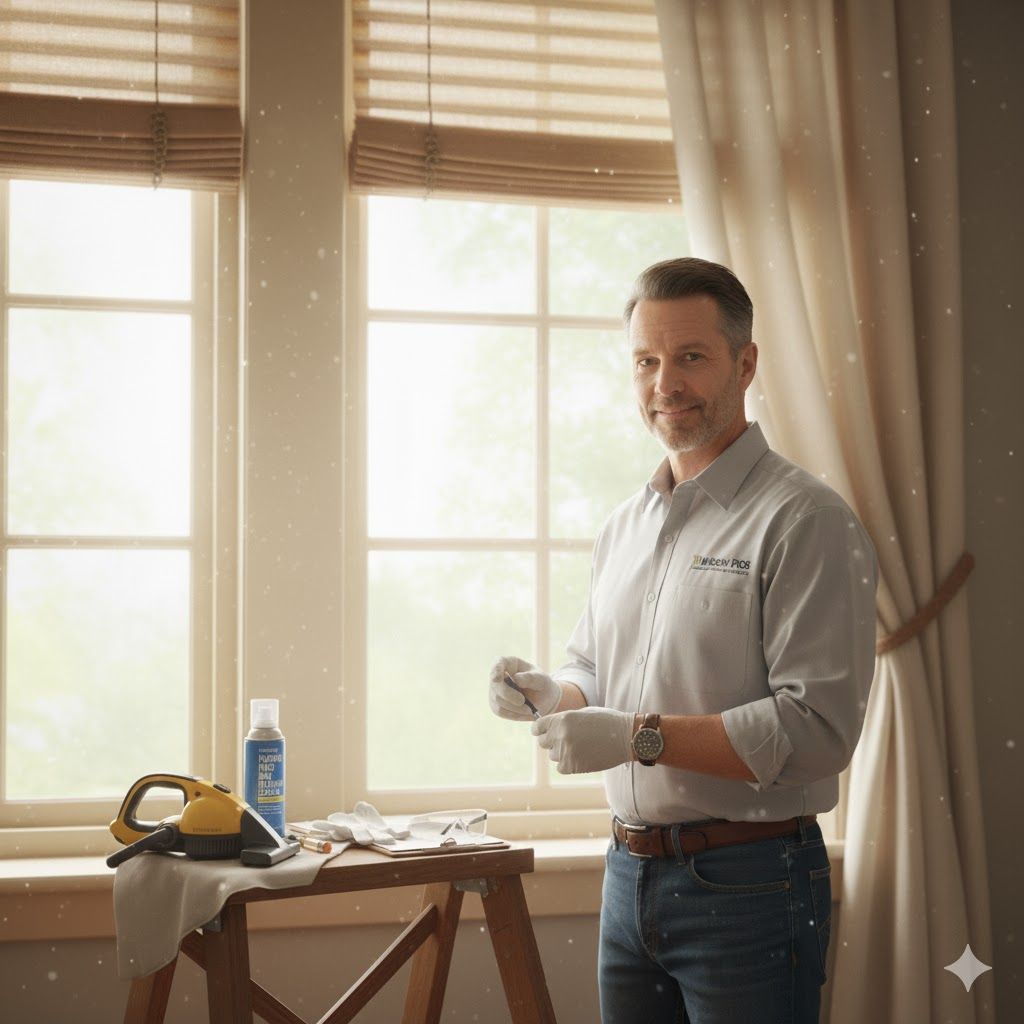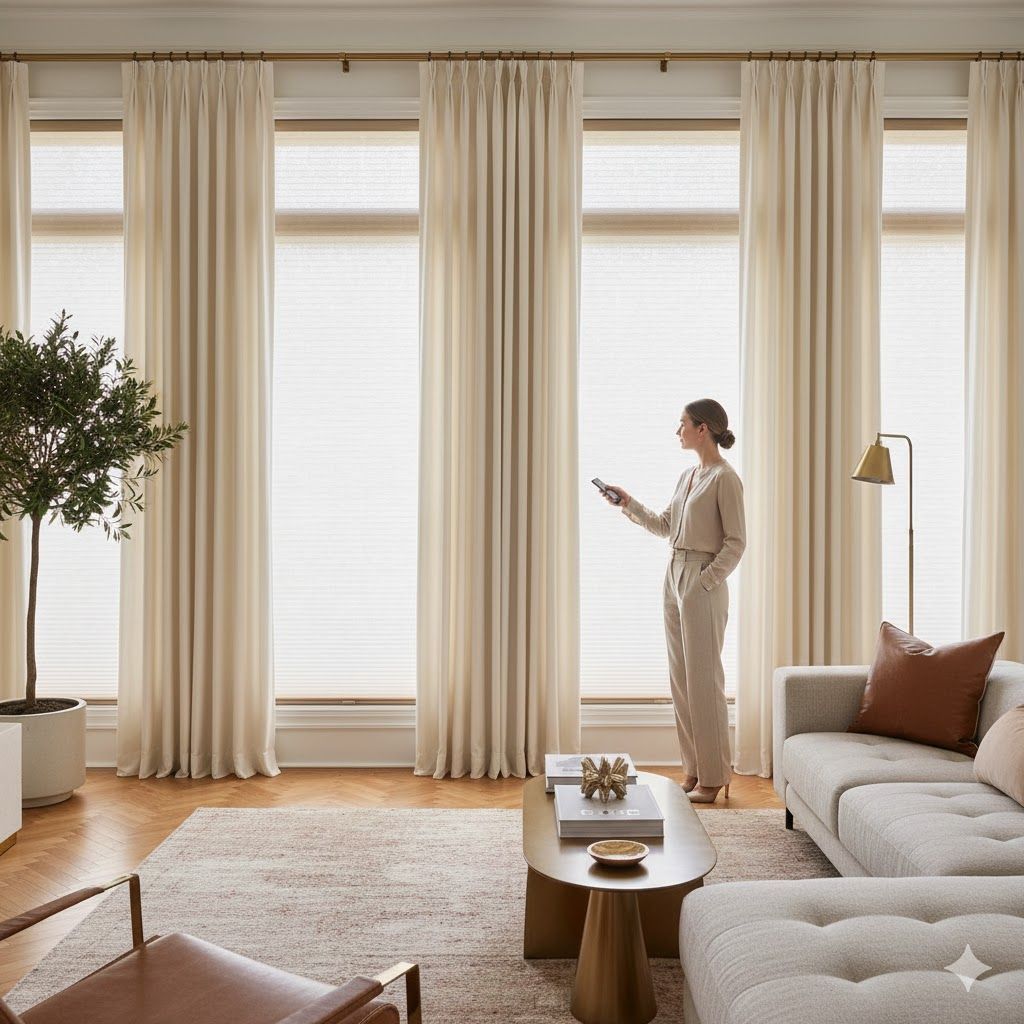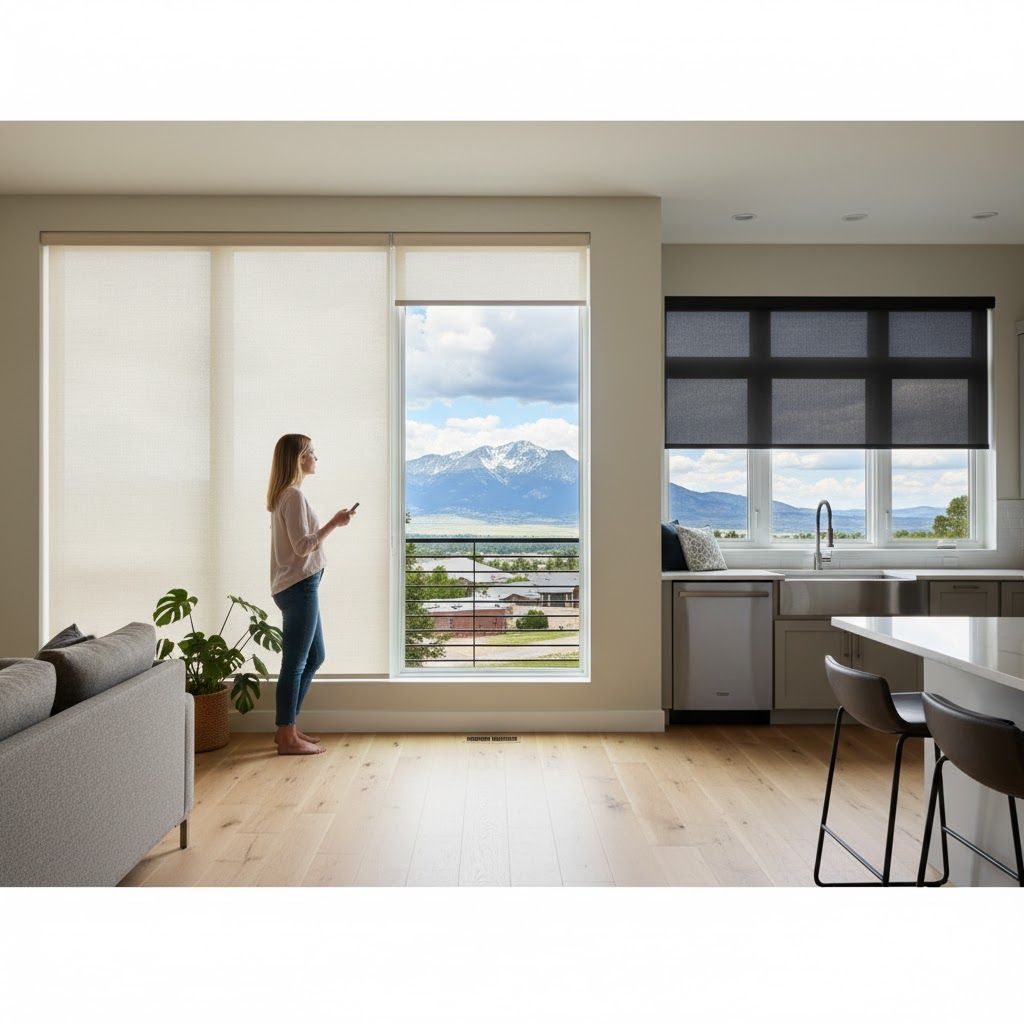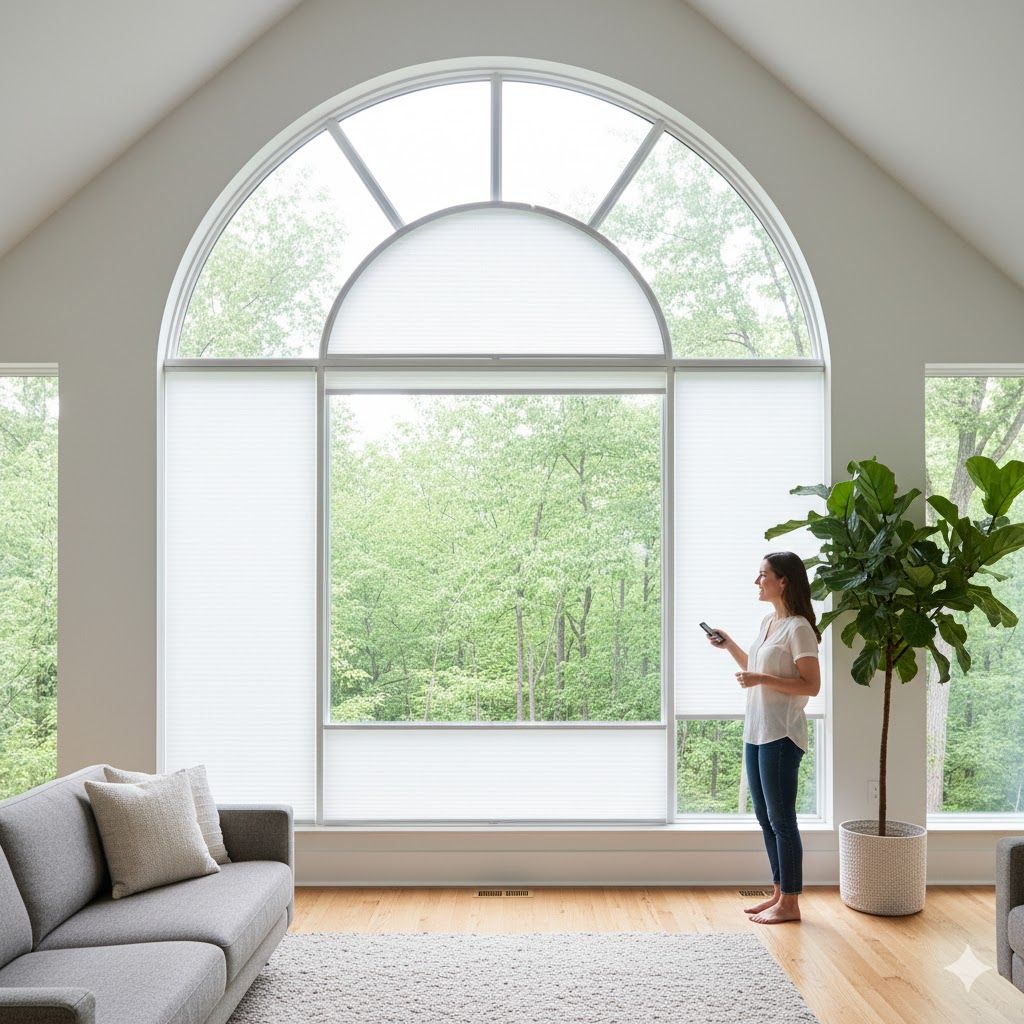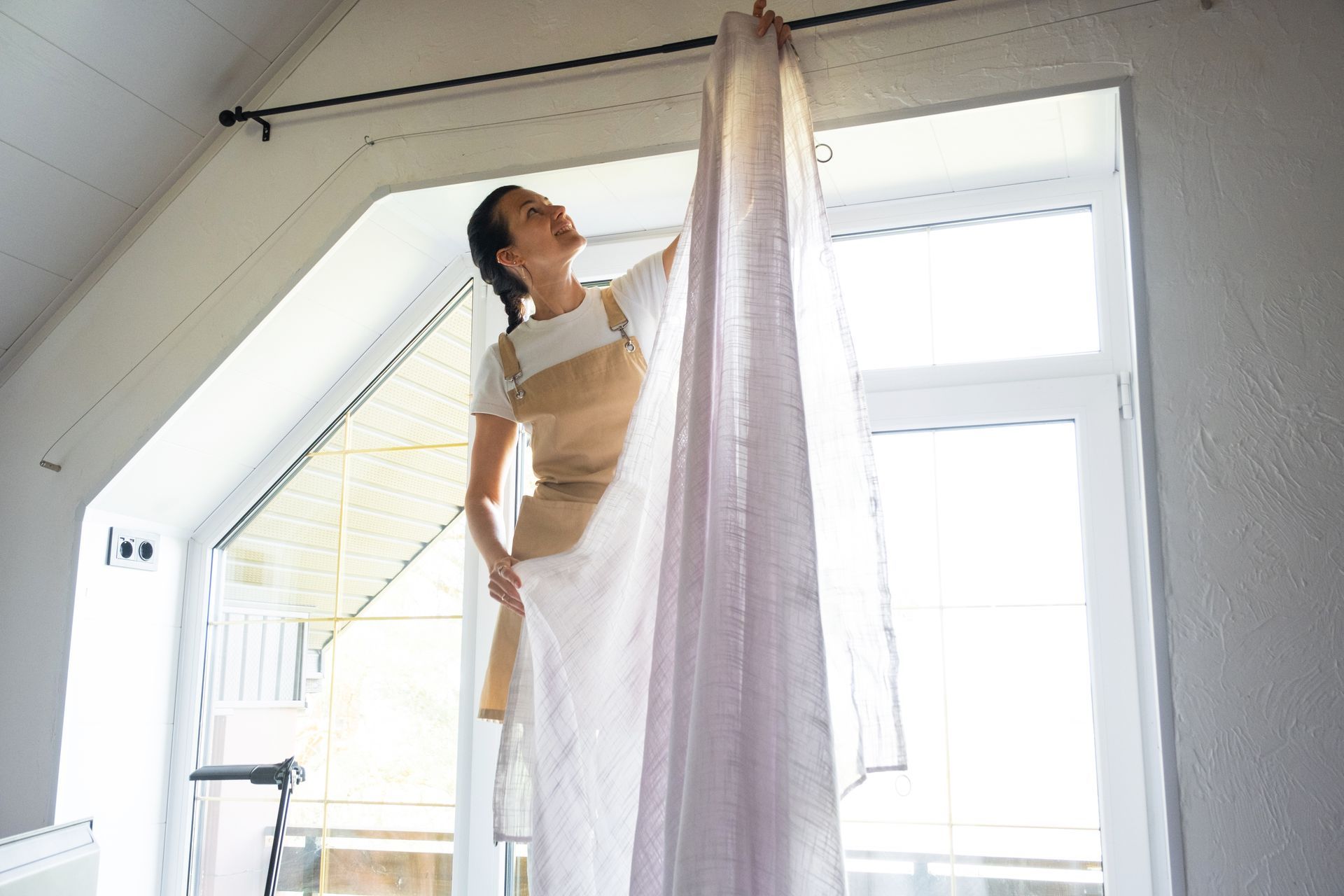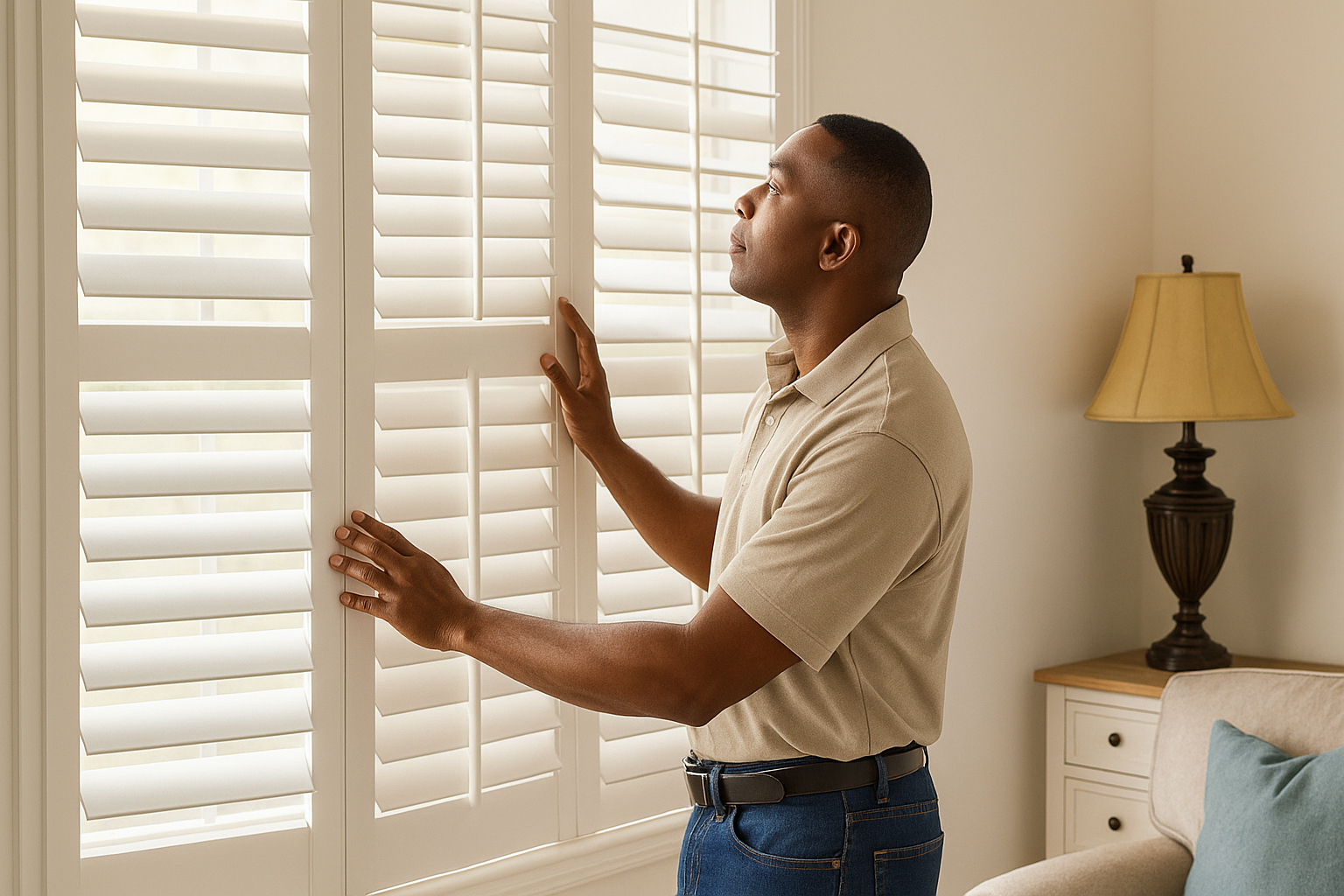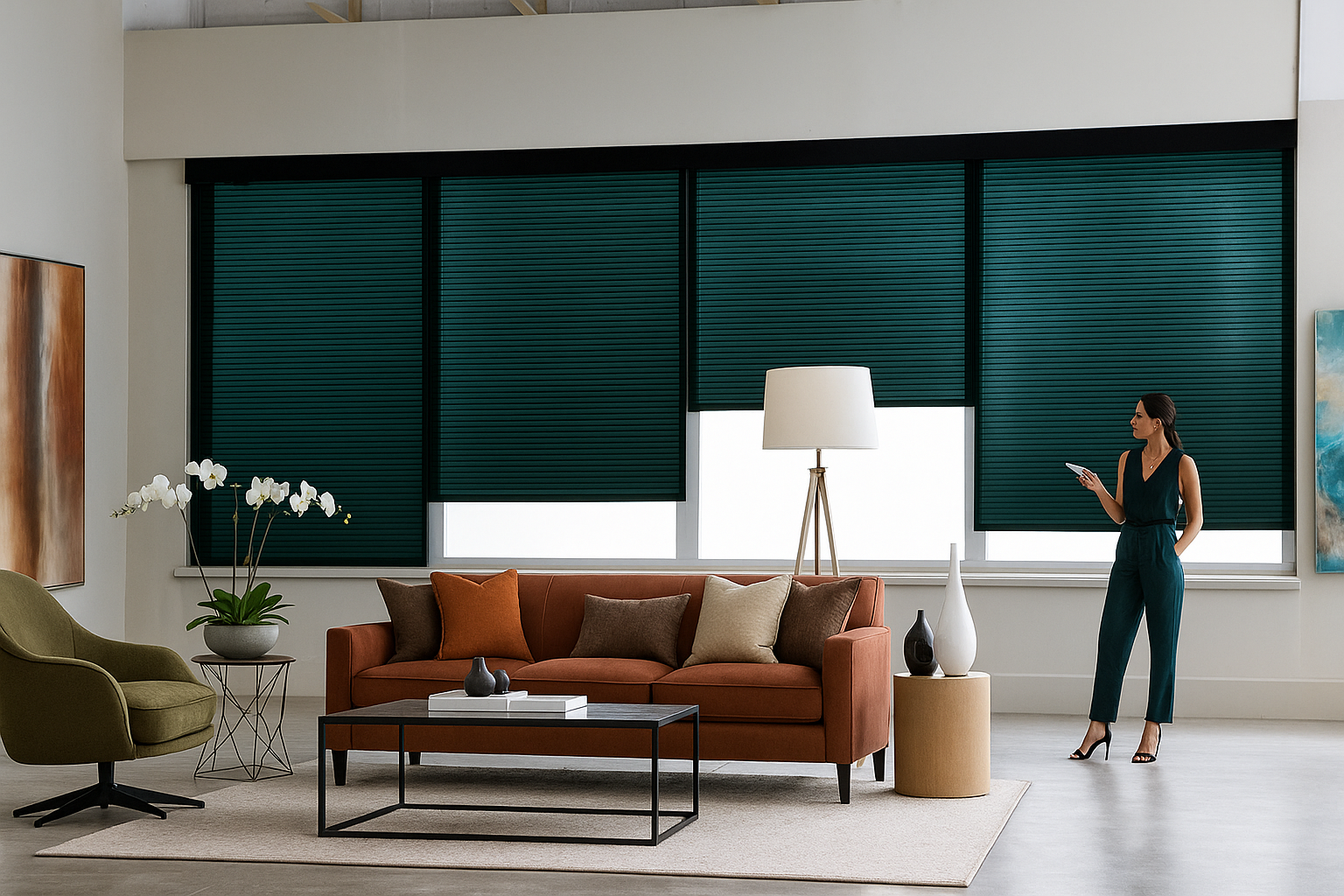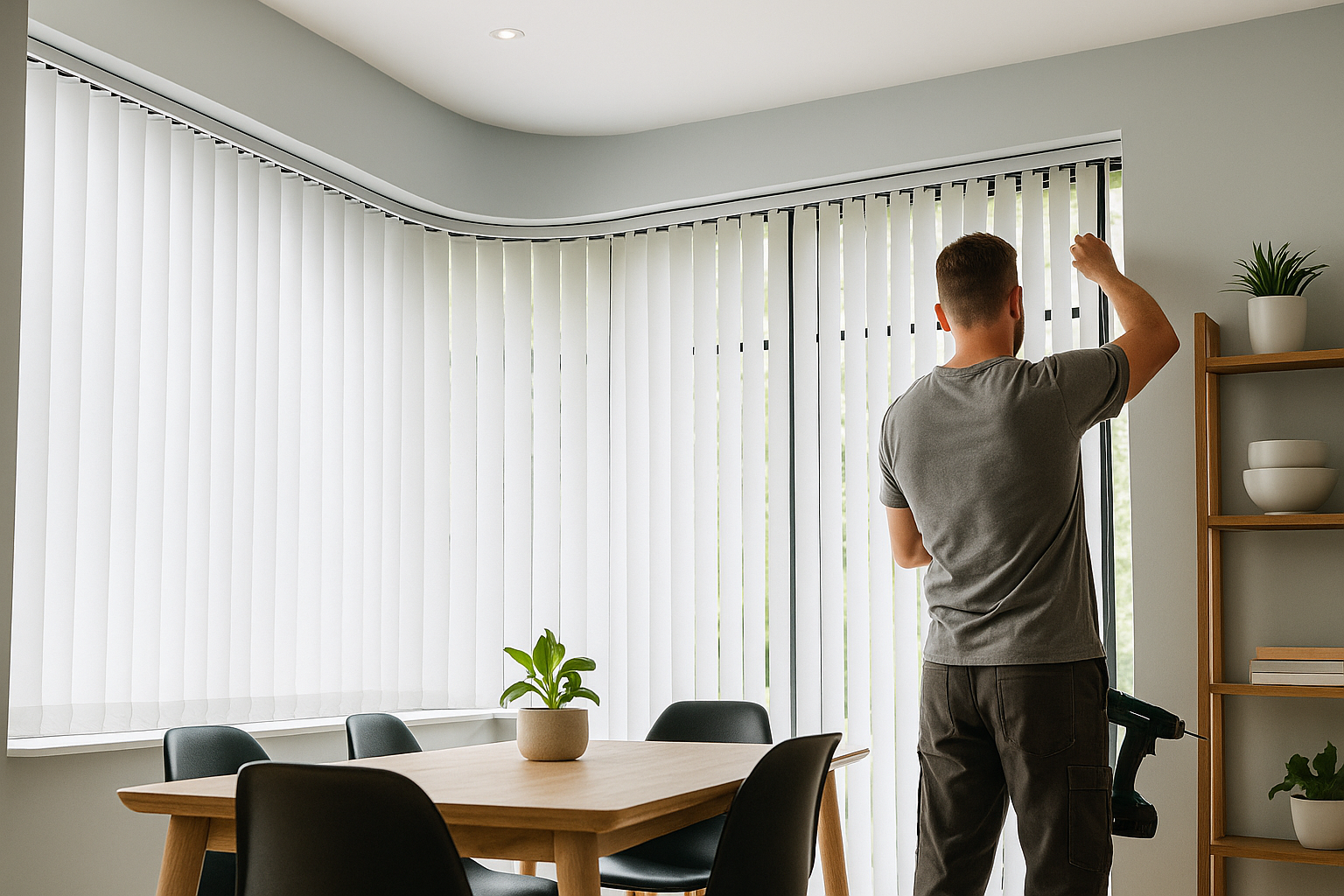Blinds vs. Solar Shades in Colorado:
Which Saves You More on Energy Bills?
TLDR;
In Colorado, solar shades generally offer more energy savings than traditional blinds due to their superior ability to block heat and harmful UV rays while still allowing in natural light. However, blinds can still contribute to energy efficiency if chosen and used correctly—especially in combination with other treatments.
Love Is Blinds CO helps homeowners choose the most effective option for their space and climate needs.
Why Energy-Efficient Window Treatments Matter in Colorado
Colorado’s climate is defined by stark temperature swings—scorching summer days and frigid winter nights. These extremes mean that homes here require solutions tailored for both heating and cooling efficiency.
- Colorado Climate Zones: The state includes several zones, from high-alpine regions to semi-arid plains. Each has distinct insulation and solar control needs.
- Heating & Cooling Costs: A typical Colorado home spends 40–60% of its energy costs on temperature control.
- Seasonal Energy Usage:
- Winter: Heating with gas or electric systems is essential
- Summer: AC units battle intense UV exposure, especially at higher altitudes
Energy-efficient window coverings can act like insulation or sunblock, helping regulate interior temperatures year-round.
Understanding Energy Performance – Blinds vs. Solar Shades

If you're weighing your options, Choosing Between Shades and Blinds is essential to understanding how each performs in Colorado’s climate.
How Blinds Work to Insulate
Blinds, especially those with slats, provide adjustable light control—but insulation depends heavily on material and usage.
- Reflective blinds can bounce sunlight back outside
- Thick vinyl or wood blinds reduce heat transfer more than metal
- Closed slats trap air, creating a buffer zone in winter
Pros:
- Good at blocking direct sunlight
- Adjustable for light control
- Lower upfront cost
Cons:
- Less effective for insulation compared to other options
- Gaps between slats allow air leakage
What Are Solar Shades and How Do They Save Energy?
Solar shades are tightly woven fabrics designed to reduce heat gain and glare from sunlight—while preserving exterior views.
- Openness factor ranges from 1% to 14%, indicating how much light and visibility they allow
- UV blocking ability reduces interior fading and cooling demand
- Less obstruction of outdoor views and more natural light retention
Pros:
- Superior summer heat reduction
- Protect furniture and floors from UV damage
- Preserve outdoor views with filtered daylight
Cons:
- Reduced privacy at night
- Generally more expensive than standard blinds
Cellular Shades: A Third Option Worth Mentioning
Though not the main comparison, cellular (honeycomb) shades deserve attention due to their high insulation value.
- Structure traps air, enhancing thermal efficiency
- Double-cell varieties achieve R-values of 4.5+
- Ideal for extreme climates like Colorado
Best For:
- Bedrooms or living rooms in alpine or wind-exposed regions
- Maximizing winter heat retention
Climate and Utility Cost Factors Unique to Colorado
Summer Heat and Winter Cold – A Double-Edged Sword
With 300+ sunny days a year and snow-covered winters, Colorado homes face a rare dual challenge: blocking summer heat and preserving winter warmth.
- In Denver and Boulder, highs reach mid-90s in summer, while winters drop below freezing
- Alpine climates (e.g., Aspen, Vail) face even more insulation demand
Colorado Energy Rates – How Much Are You Paying to Heat or Cool?
- Xcel Energy customers pay an average of $0.14 per kWh (electricity) and $0.98 per therm (natural gas)
- Winter heating with gas can average $150–300/month
- Summer AC bills increase dramatically for south-facing homes with poor window treatments
Window coverings become key to breaking these cost cycles.
Energy Savings and ROI Comparison
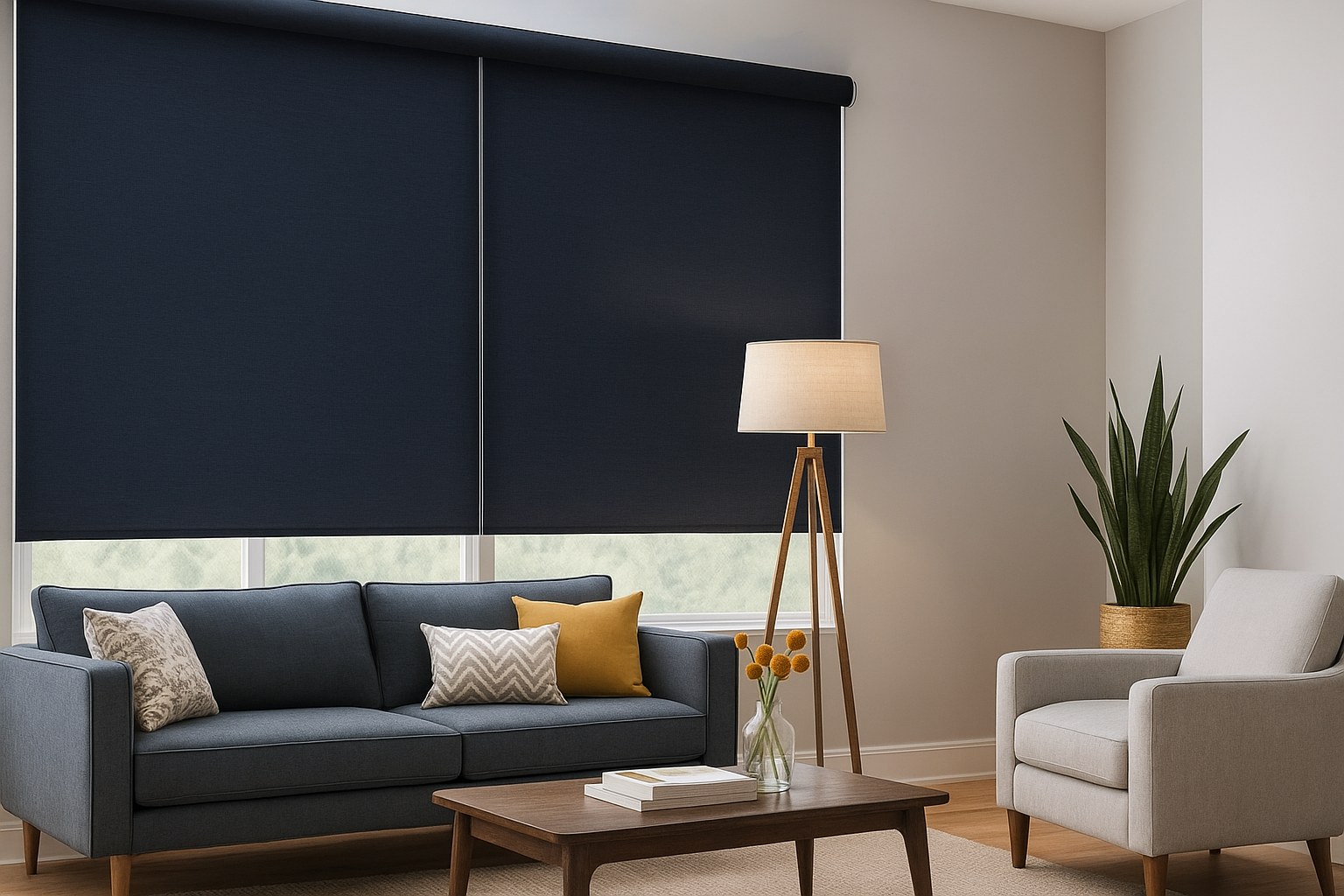
Upfront Costs: Blinds vs. Solar Shades (Installed in Colorado)
- Blinds: $80–$150 per window (standard materials)
- Solar Shades: $150–$350 per window (quality brands)
Factors that affect price:
- Size and shape of window
- Motorization or smart controls
- Professional installation
Estimated Monthly and Yearly Energy Savings
Based on DOE data and Colorado-specific studies:
- Solar shades:
- Save 15–25% on cooling bills during summer months
- Offer UV protection that prolongs HVAC and furniture life
- Blinds:
- Offer up to 10% savings if used strategically (closed during day in summer, open in winter)
ROI Breakdown Over 5 Years
| Window Covering | Avg. Cost (Installed) | Estimated Annual Savings | 5-Year ROI | Energy Impact |
|---|---|---|---|---|
| Basic Blinds | $100/window | $40/year | ~200% | Low-Moderate |
| Solar Shades | $250/window | $100/year | ~200% | Moderate-High |
| Cellular Shades | $300/window | $120/year | ~200% | Very High |
Incentives, Tax Credits, and Rebates for Colorado Residents
Federal Energy Efficiency Tax Credits
- In 2025, IRS Form 5695 allows up to 30% credit (max $1,200) on qualifying window treatments
- Must be AERC-certified or ENERGY STAR rated
Local Rebates from Colorado Utilities
- Xcel Energy: Offers seasonal rebates for energy-efficient window treatments
- EnergySmart Colorado: State program with localized funding for upgrades
How to Qualify and Apply
- Choose eligible products (usually solar or cellular shades)
- Install with licensed contractor (if required)
- Keep receipts and request manufacturer certification statement
- Submit Form 5695 with your federal tax return
Smart Strategies to Maximize Savings Year-Round
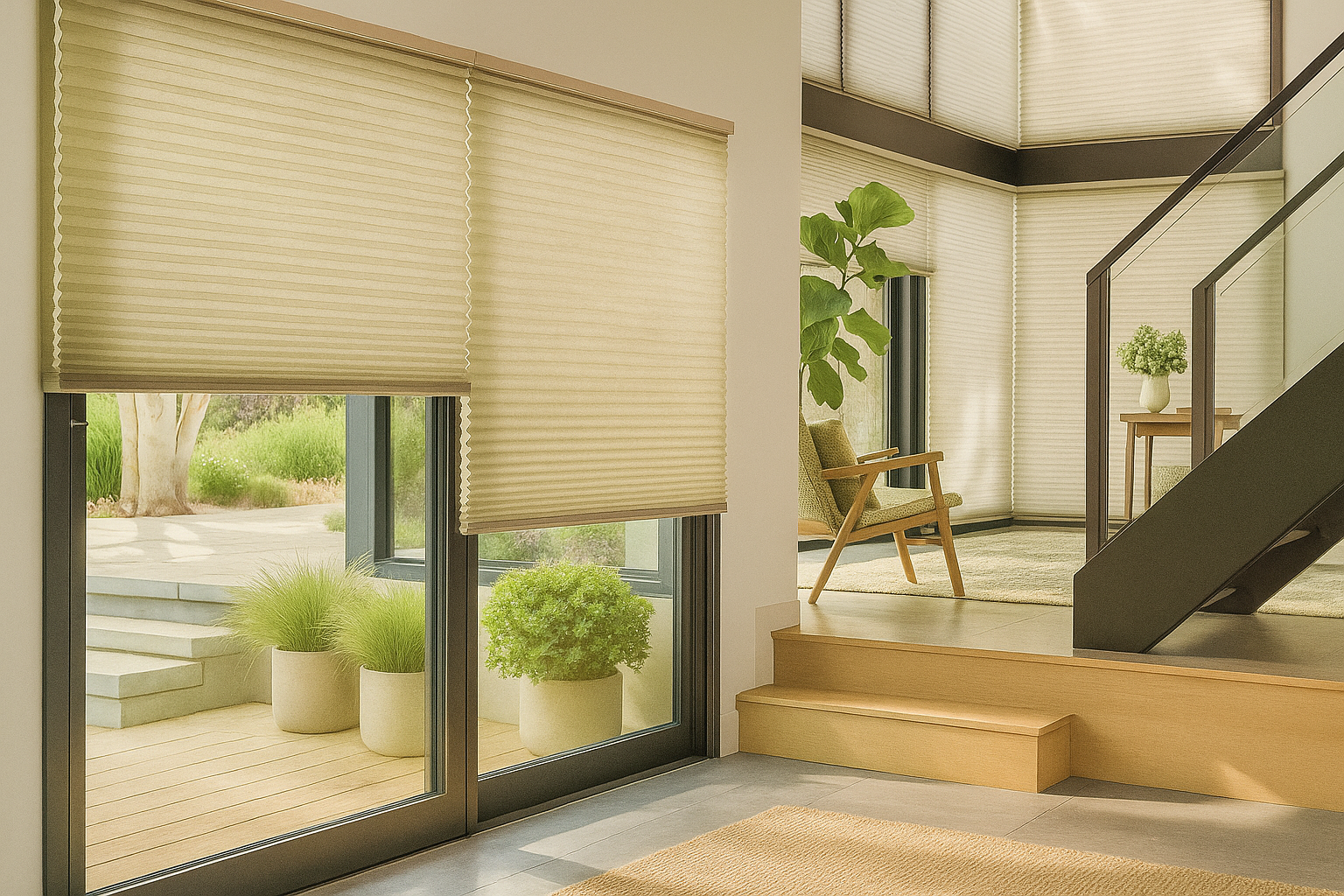
Using Blinds and Shades by Season
- Summer:
- Keep solar shades down on sunny sides
- Use light colors to reflect sunlight
- Winter:
- Open blinds during sunny days to harness passive solar heat
- Close cellular shades at night to trap heat
Layering Window Treatments
Combining treatments can offer dual benefits:
- Solar shade + blackout drape: Daylight control + thermal barrier
- Blind + thermal curtain: Enhanced winter insulation
Automating Your Energy Savings
- Motorized solar shades: Adjust based on time of day or sunlight level
- Smart blinds: Integrate with thermostats or solar sensors
This is especially effective in Colorado's high-altitude towns where UV and temp shifts occur rapidly.
Choosing the Best Option for Your Home
What Room Are You Treating?
- Living room: Use solar shades to preserve light and reduce glare
- Bedrooms: Cellular or blackout layered with solar shades
- Offices: Solar shades reduce eye strain without darkening
What’s Your Budget and Long-Term Goal?
- Low upfront, modest savings: Choose blinds
- Moderate investment, higher returns: Choose solar shades
- Maximum efficiency, higher budget: Choose cellular shades
DIY vs Professional Install – What to Expect in Colorado
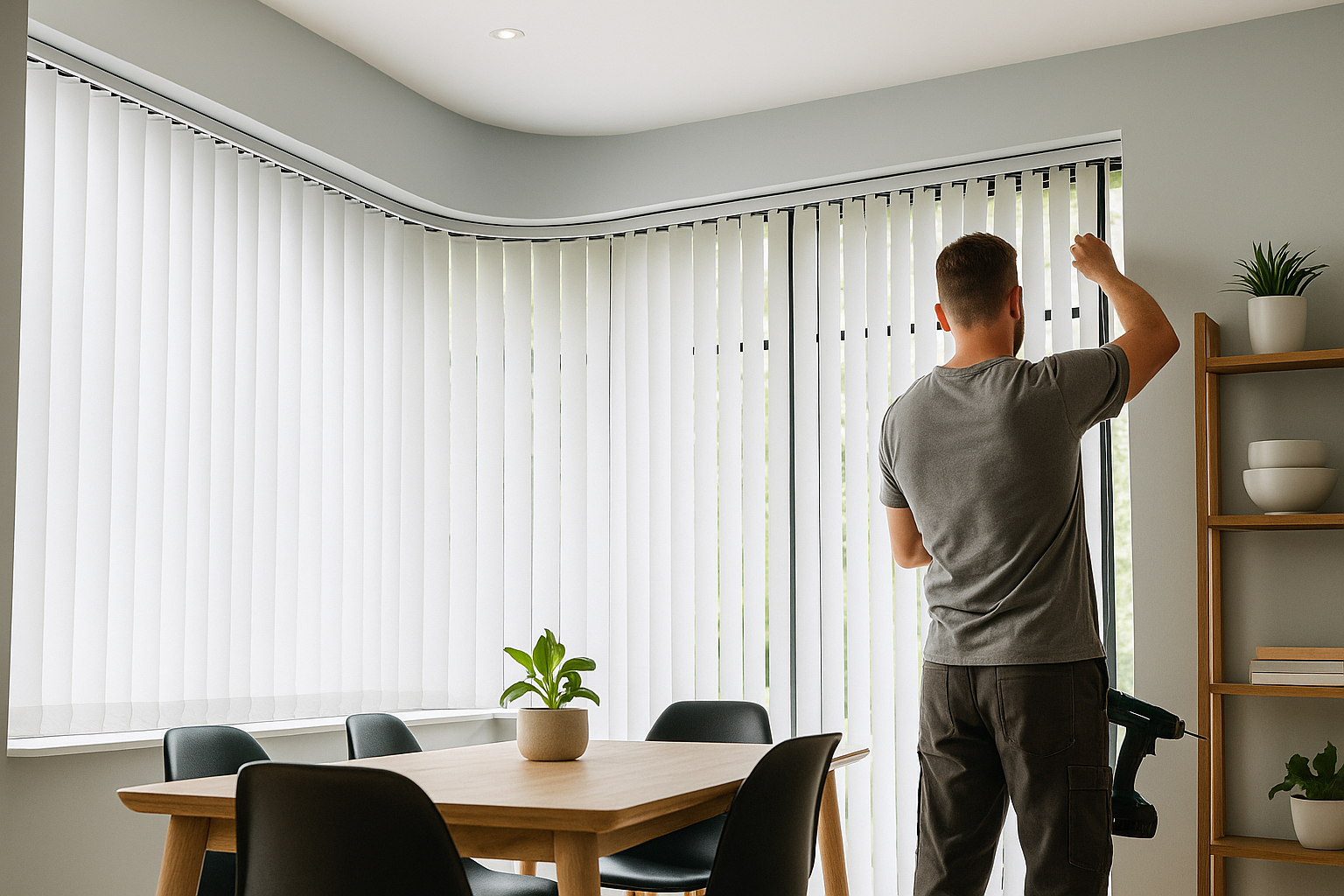
Cost Savings of DIY vs Hiring Pros
- DIY may save 20–50%, but mistakes can reduce energy efficiency
Tools & Skills Needed for DIY in High-Altitude Areas
- Accurate measurements
- Ladder work on large or tall windows
- Proper anchoring for shifting drywall in older Colorado homes
What to Expect from a Certified Installer
- Exact fitting for insulation tightness
- Knowledge of product eligibility for rebates
- Efficiency advice tailored to your home's layout
Colorado-Specific FAQ

